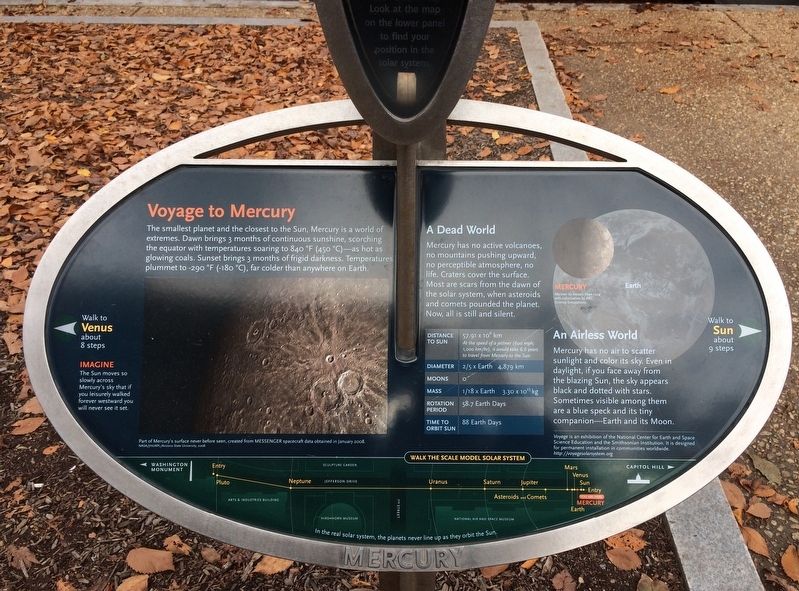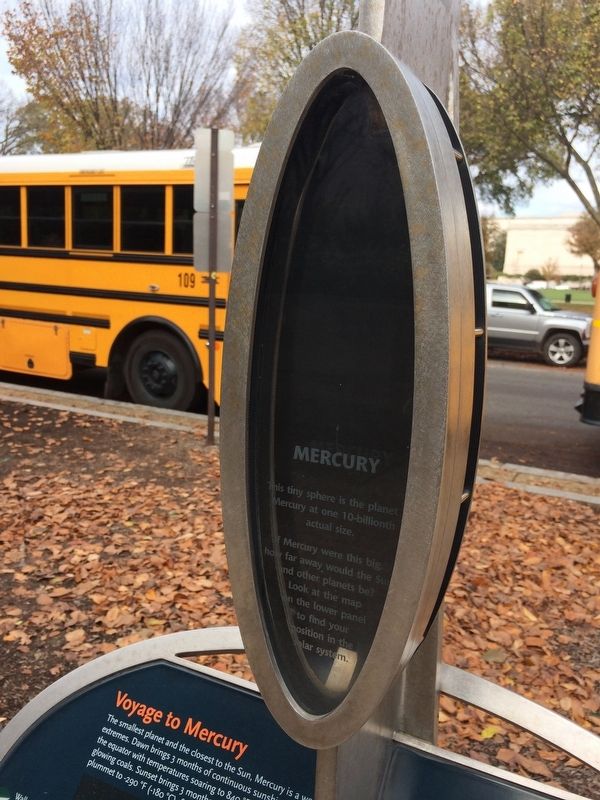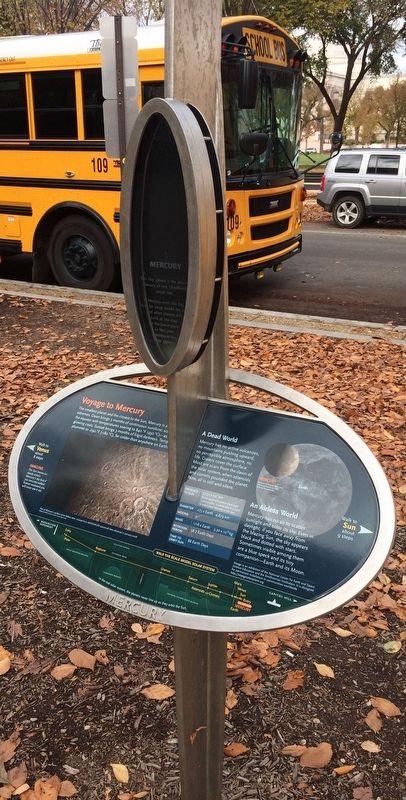The National Mall in Southwest Washington in Washington, District of Columbia — The American Northeast (Mid-Atlantic)
Mercury
This tiny sphere is the planet Mercury at one 10-billionth actual size.
If Mercury were this big, how far away would the sun and other planets be? Look at the map on the lower panel to find your position in the solar system.
Bottom section of the marker
Voyage to Mercury
The Smallest planet and the closest to the Sun, Mercury is a world of extremes. Dawn brings 3 months of continuous sunshine, scorching the equator with temperatures soaring to 840°F (450°C)—as hot as glowing coals. Sunset brings 3 months of frigid darkness. Temperatures plummet to -290°F (-180°C), far colder than anywhere on Earth.
A Dead World
Mercury has no active volcanoes, no mountains pushing upward, no perceptible atmosphere, no life. Craters cover the surface. Most are scars from the dawn of the solar system, when asteroids and comets pounded the planet. Now, all is still and silent.
An Airless World
Mercury has no air to scatter sunlight and color its sky. Even in daylight if you face away from the blazing Sun, the sky appears black and dotted with stars. Sometimes visible among them are a blue speck and its tiny companion--Earth and its Moon.
Walk to Venus about 8 steps
Imagine
The Sun moves so slowly across Mercury's sky that if you leisurely walked forever westward you would never see it set.
Walk to Sun about 9 steps
Erected 2013 by Smithsonian Institution.
Topics. This historical marker is listed in this topic list: Air & Space.
Location. 38° 53.323′ N, 77° 1.118′ W. Marker is in Southwest Washington in Washington, District of Columbia. It is in The National Mall. Marker is on Jefferson Drive Southwest west of 4th Street Southwest, on the right when traveling east. On the grounds of the National Air and Space Museum. Touch for map. Marker is at or near this postal address: 600 Independence Southwest, Washington DC 20565, United States of America. Touch for directions.
Other nearby markers. At least 8 other markers are within walking distance of this marker. Earth (here, next to this marker); Mars (a few steps from this marker); Asteroids and Comets (within shouting distance of this marker); Star Nurseries (about 300 feet away, measured in a direct line); Cook Telescope (about 300 feet away); Binary Stars (about 300 feet away); Saturn (about 300 feet away); Sun (about 300 feet away). Touch for a list and map of all markers in Southwest Washington.
More about this marker.
Voyage is an exhibition of the National Center
http://voyagesolarsystem.org
Credits. This page was last revised on January 30, 2023. It was originally submitted on November 24, 2017, by Devry Becker Jones of Washington, District of Columbia. This page has been viewed 169 times since then and 10 times this year. Photos: 1, 2, 3, 4. submitted on November 24, 2017, by Devry Becker Jones of Washington, District of Columbia. • Bill Pfingsten was the editor who published this page.



